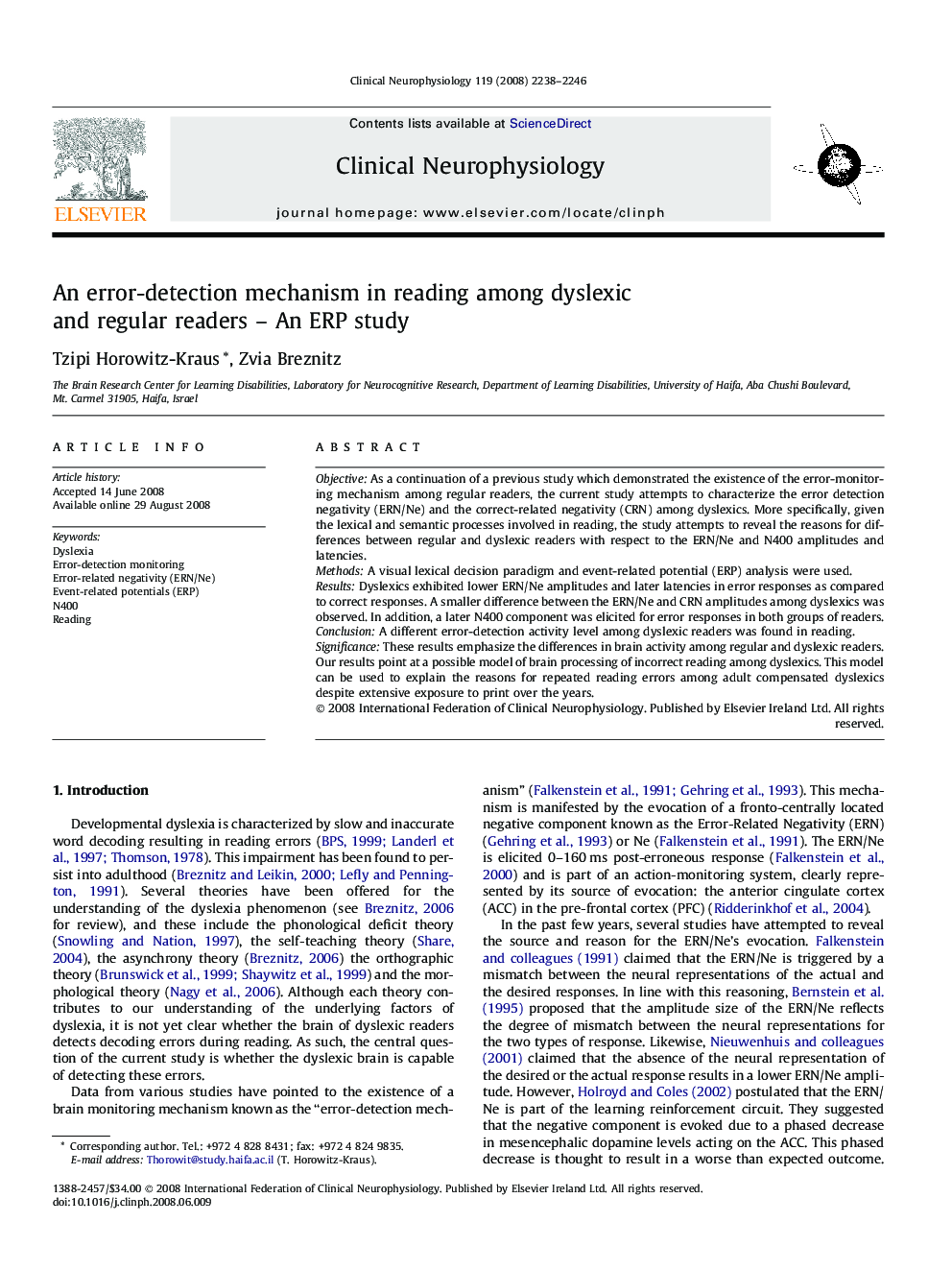| Article ID | Journal | Published Year | Pages | File Type |
|---|---|---|---|---|
| 3046457 | Clinical Neurophysiology | 2008 | 9 Pages |
ObjectiveAs a continuation of a previous study which demonstrated the existence of the error-monitoring mechanism among regular readers, the current study attempts to characterize the error detection negativity (ERN/Ne) and the correct-related negativity (CRN) among dyslexics. More specifically, given the lexical and semantic processes involved in reading, the study attempts to reveal the reasons for differences between regular and dyslexic readers with respect to the ERN/Ne and N400 amplitudes and latencies.MethodsA visual lexical decision paradigm and event-related potential (ERP) analysis were used.ResultsDyslexics exhibited lower ERN/Ne amplitudes and later latencies in error responses as compared to correct responses. A smaller difference between the ERN/Ne and CRN amplitudes among dyslexics was observed. In addition, a later N400 component was elicited for error responses in both groups of readers.ConclusionA different error-detection activity level among dyslexic readers was found in reading.SignificanceThese results emphasize the differences in brain activity among regular and dyslexic readers. Our results point at a possible model of brain processing of incorrect reading among dyslexics. This model can be used to explain the reasons for repeated reading errors among adult compensated dyslexics despite extensive exposure to print over the years.
